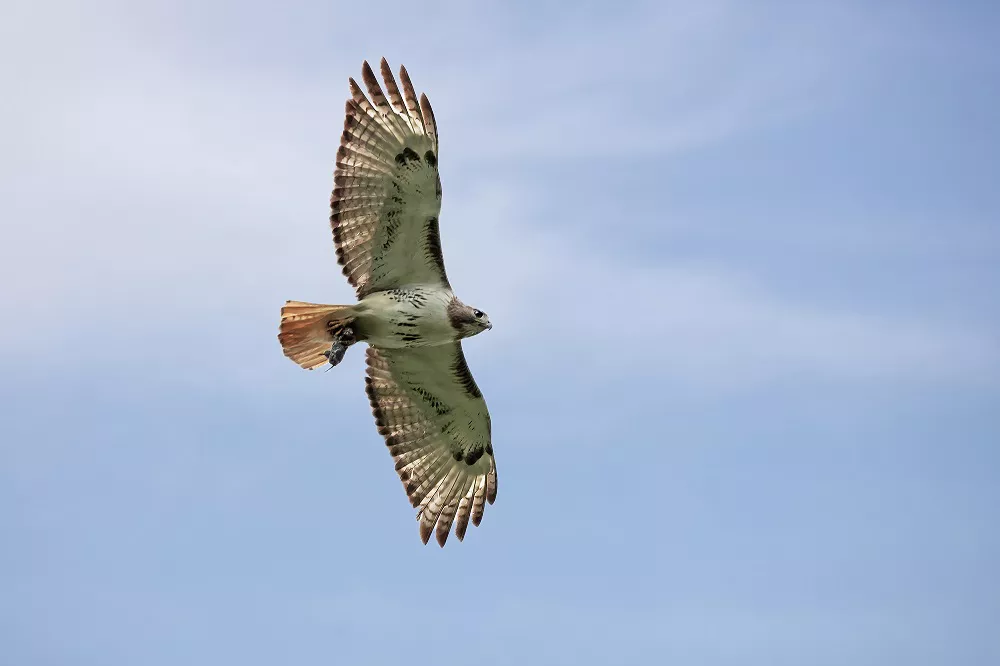Red-tailed hawks are one of the most common and widespread birds of prey in North America. Known for their impressive hunting skills and majestic appearance, these raptors have captured the imagination of bird enthusiasts and nature lovers throughout the world. However, despite their popularity, many people are still unaware of how long these birds can live. In this article, we’ll explore the lifespan of red-tailed hawks and some of the factors that impact their longevity.
Introduction to Red-Tailed Hawks
Red-tailed hawks are large birds of prey that belong to the family Accipitridae. They are found throughout North America, from Alaska and Canada to Mexico and Central America. These hawks are known for their distinctive red tails, which are displayed prominently during flight. They have broad wings and powerful talons, making them formidable hunters capable of taking down a wide range of prey.
Lifespan of Red-Tailed Hawks
Red-tailed hawks are relatively long-lived birds compared to many other species of birds of prey. On average, red-tailed hawks live for about 10 to 15 years in the wild. in captivity, some red-tailed hawks have been known to live up to 30 years or more. This is due to the fact that captive birds are protected from predators, diseases, and other hazards that wild birds face on a regular basis.
Factors That Impact Red-Tailed Hawks Lifespan
The lifespan of a red-tailed hawk depends on a variety of factors, including habitat, food availability, predation and disease.
Habitat and Food Availability
The availability of suitable habitats and an abundant food supply significantly impact the lifespan of Red-Tailed Hawks. These raptors thrive in diverse environments, from open woodlands and grasslands to urban areas. Habitats that provide ample perching sites, suitable nesting locations, and a variety of prey species contribute to healthier individuals and longer lifespans. Adequate food availability ensures their nutritional needs are met, leading to better survival rates and increased chances of living a longer life.
Predation
One of the most significant factors is predation. Red-tailed hawks are vulnerable to predation by larger birds of prey, such as eagles and owls, as well as terrestrial predators like coyotes and foxes. Additionally, human activities such as urbanization, habitat destruction, and poisoning can also have a negative impact on the survival of these birds.
Disease
Disease and illness are also significant factors that can impact the lifespan of red-tailed hawks. Like all animals, these birds are susceptible to a range of diseases and illnesses. In particular, West Nile virus has been identified as a significant threat to red-tailed hawks and other birds of prey in North America.
In captivity, red-tailed hawks can live significantly longer than their wild counterparts. Hawks that are raised in captivity can live up to 30 years or more with proper care and nutrition.
It is important to note that red-tailed hawks, like all birds of prey, are protected under the Migratory Bird Treaty Act. It is illegal to hunt, trap, or kill red-tailed hawks without a permit.
Conclusion
The Red-Tailed Hawk demonstrates a remarkable ability to adapt and thrive in diverse environments. While the average lifespan of Red-Tailed Hawks in the wild is approximately 10 to 15 years, some individuals can surpass two decades, highlighting their endurance and resilience. However, their lifespan can be impacted by a range of factors, including habitat, predation, disease, and food availability. It is important for conservationists and bird enthusiasts to work together to protect these magnificent creatures and ensure their survival for generations to come. By understanding the factors that impact their longevity, we can take steps to mitigate negative impacts and promote healthy populations of red-tailed hawks throughout North America.


 Facebook
Facebook  Instagram
Instagram  Youtube
Youtube 